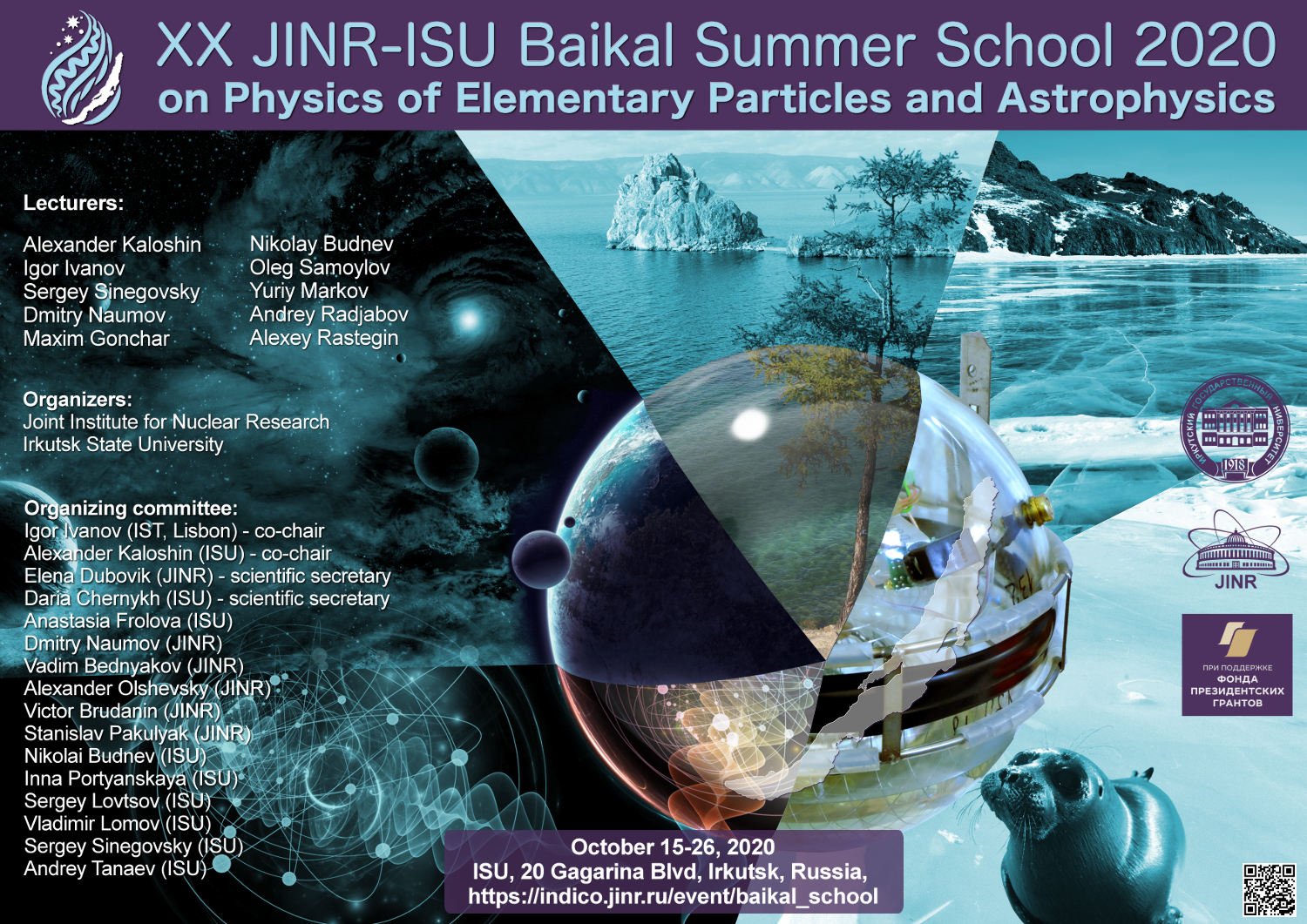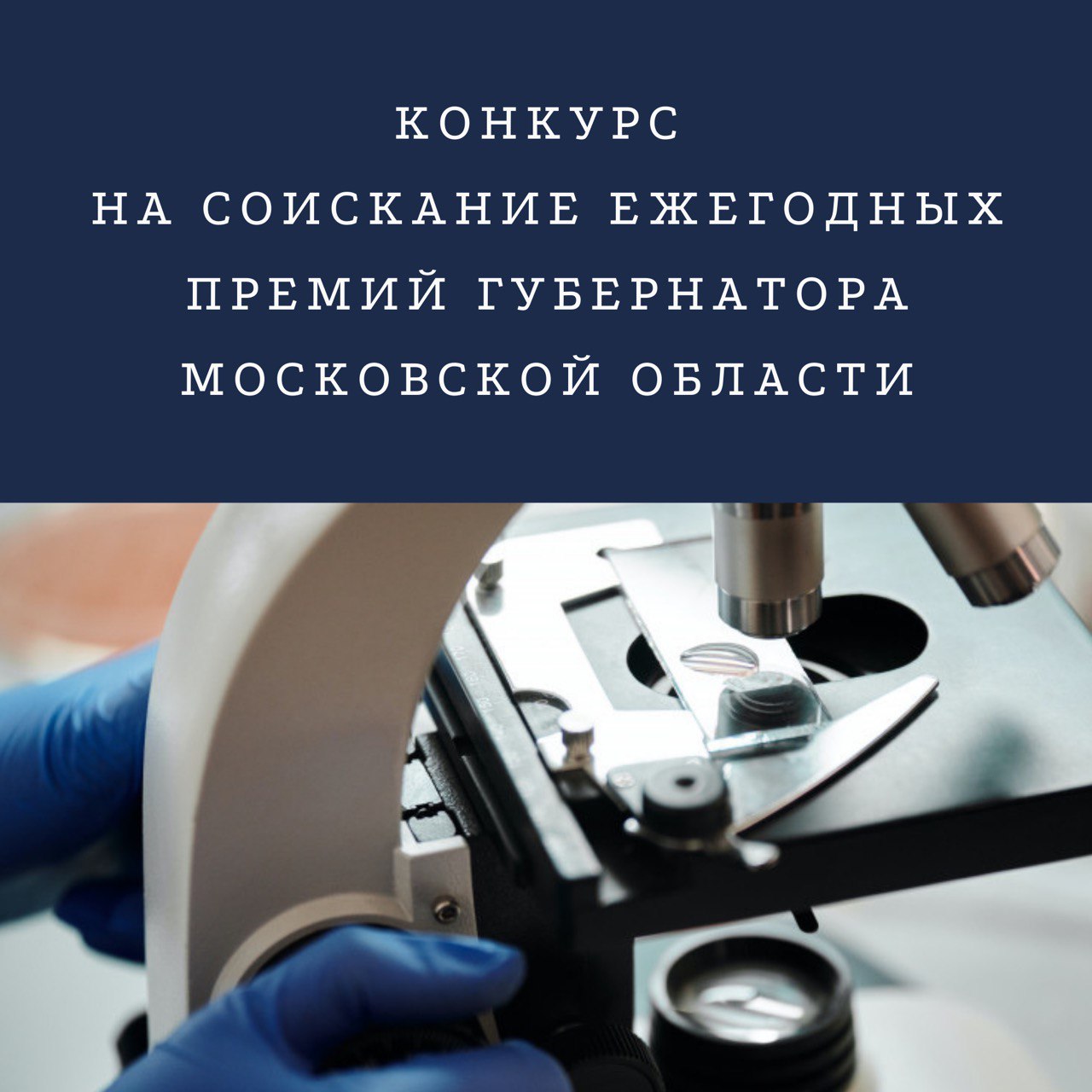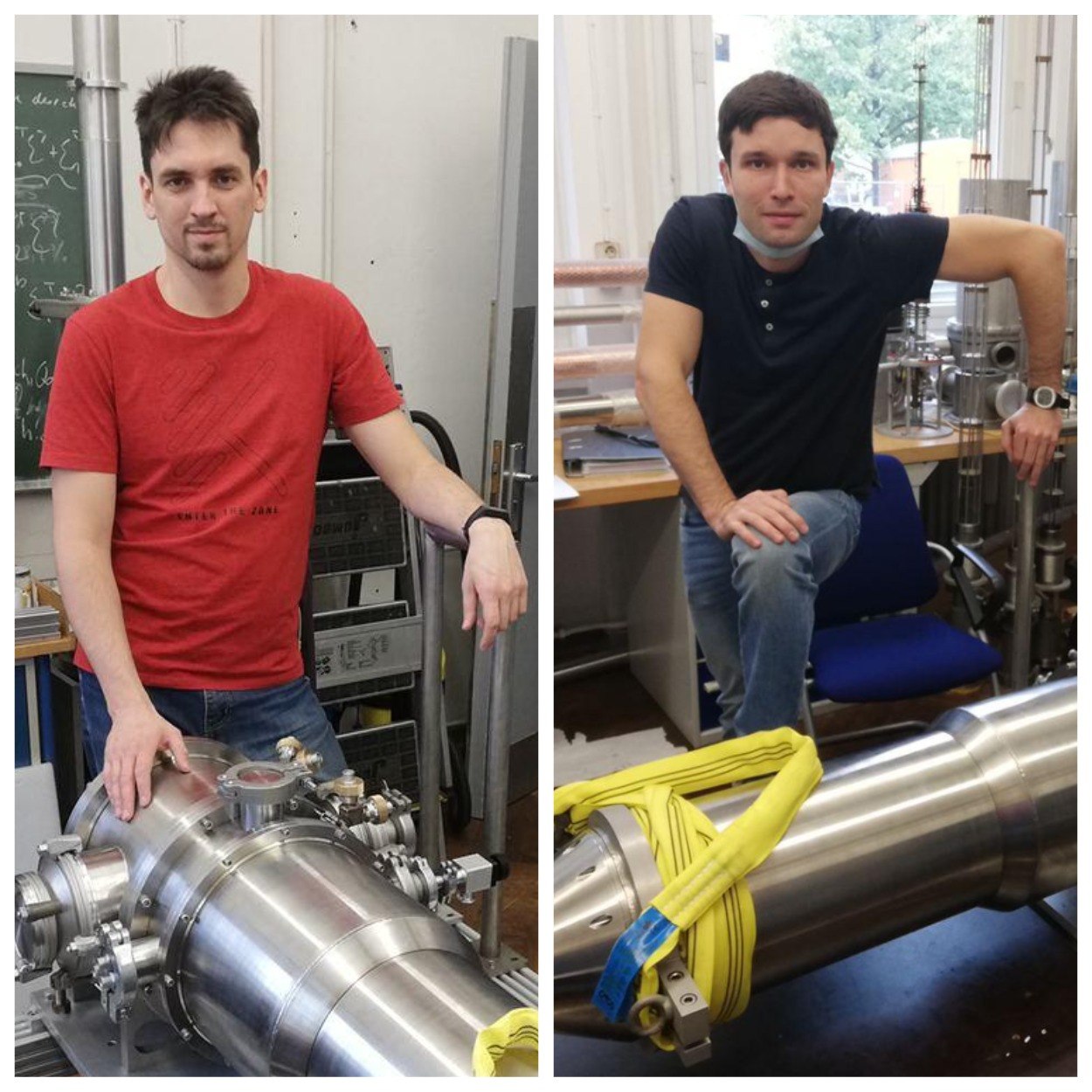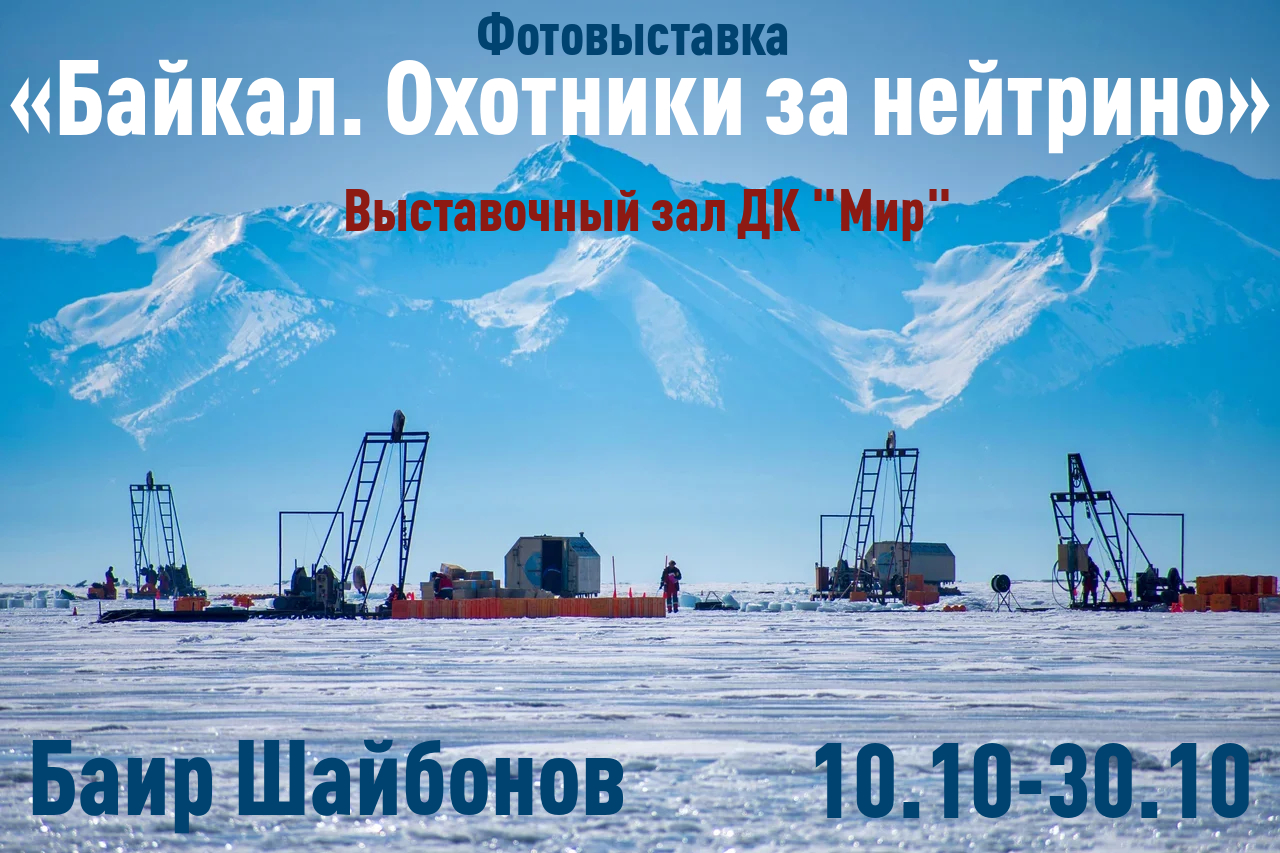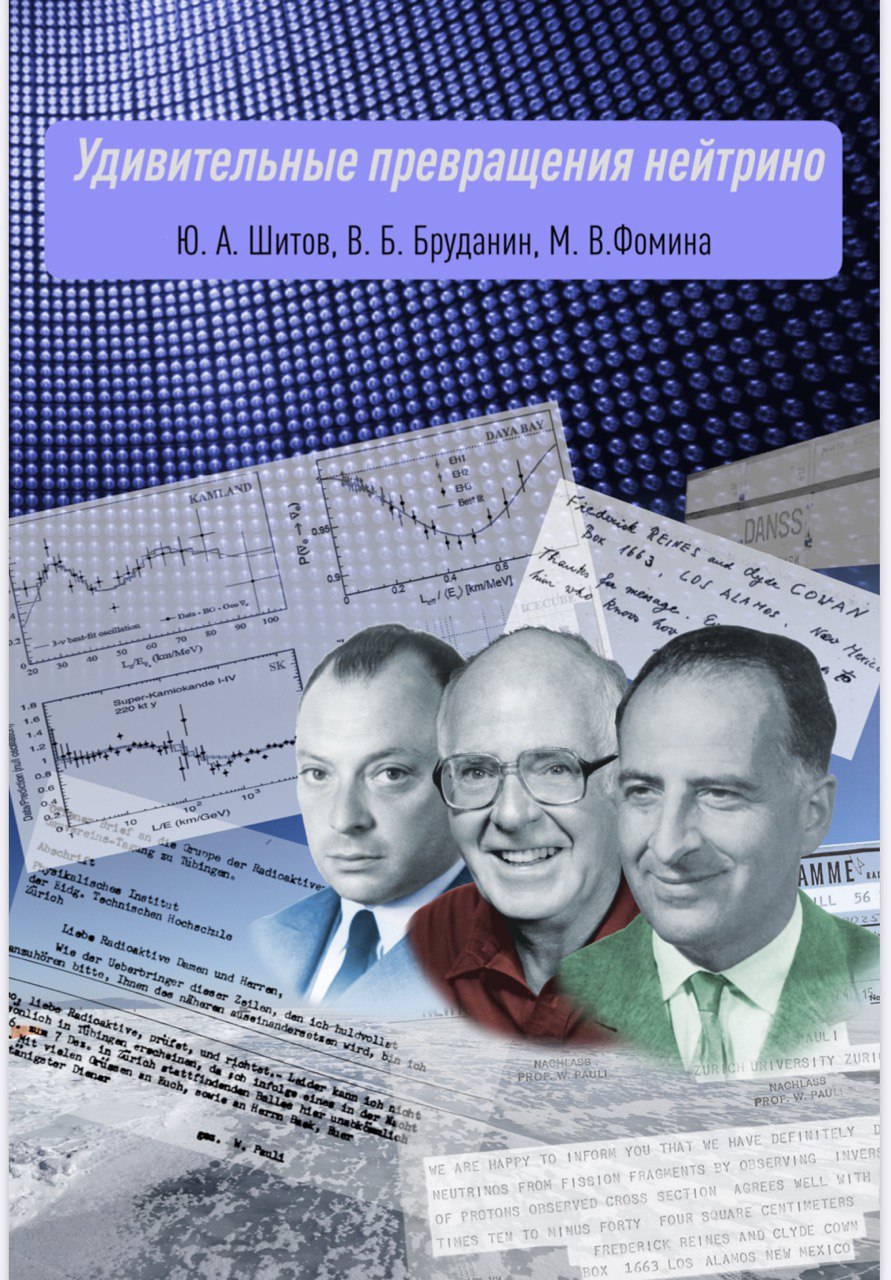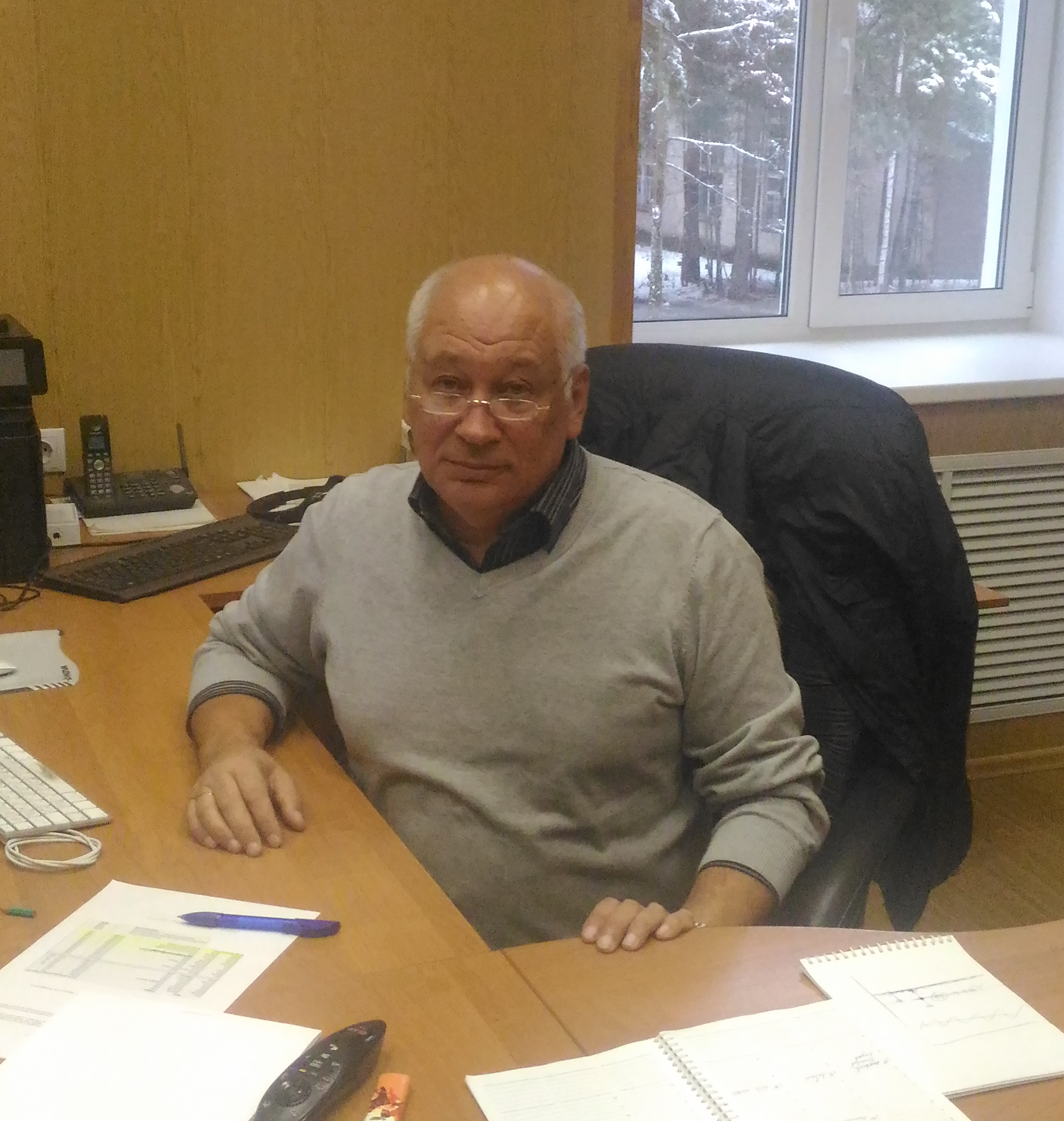News
15.10.2020
Today, the International Baikal School on Physics of Elementary Particles and Astrophysics has been launched. The first lecture for students of the Faculty of Physics of Irkutsk State University and attendees connected via the Zoom platform was given by Nikolay Mikhailovich Budnev. The School will be held till 24 October that is why there are a lot of scientific discussions ahead. Join in!
14.10.2020
History of ultrasonic studies and hydroacoustics: from bats to the sonar. Ultrasound in medicine: diagnostics and therapy. Hypersound and phonons: the tools of modern phononics.
13.10.2020
The seminar was dedicated to the GERDA and SuperNEMO projects designed to search mainly for neutrinoless double beta (0νββ) decay of different isotopes using various methods. The discovery of this process, which violates the lepton number, would mean that neutrino is a Majorana particle and prove the existence of New Physics beyond the Standard Model. The GERDA experiment and the first phase of LEGEND are located at the Laboratori Nazionali del Gran Sasso in Italy. They search for the 0νββ decay of 76Ge and operate bare germanium detectors directly immersed in liquid argon.
13.10.2020
The Moscow Region Government will award 10 Prizes of 1 million rubles each for achievements in commercialization of research and development in 2020. Citizens or a group of citizens of the Russian Federation, no more than 10 people, active in scientific and (or) scientific and technological fields can be nominated for the Governor's Prize. They should work at institutions registered in accordance with the legislation of the Russian Federation and operating in the Moscow region or in separate divisions of institutions registered in accordance with the legislation of the Russian Federation and operating in the Moscow region, or in organizations subordinate to the executive authorities of the Moscow region.
13.10.2020
Last year, in December, we already told you about the delivery of a cryostat for polarization experiments at the ELSA accelerator in Bonn. Scientists from the Section of Low Temperatures (DLNP, JINR) are involved in the Crystal Barrel experiment. They perform runs with the current polarized target based on the 3He/4He dilution cryostat. This polarized target is being created by concerted efforts of DLNP and two universities (in Mainz and Bonn) to conduct dual polarization experiments (beam+target). The cryostat for the target was designed and fabricated at the Section of Low Temperatures under the guidance of Candidate of Technical Sciences Yuri Andreevich Usov. Now, the manufacturing of a new dilution cryostat for the Crystal Barrel experiment is in full flow according to the contract between JINR and the University of Bonn. In the photo, Ivan Gorodnov and Anton Dolzhikov are assembling and testing the new dilution cryostat at the Cryogenic Laboratory of the University of Bonn.
09.10.2020
From 10 to 30 October 2020, the Exhibition Hall of the Mir Culture Centre will host the photography exhibition “Baikal. Neutrino Hunters” devoted to the 65th anniversary of JINR. The photographer Bair Shaybonov is a regular member of Baikal expeditions, senior researcher at the Dzhelepov Laboratory of Nuclear Problems of JINR. The exhibition is open daily from 3.00 pm to 7.00 pm. The entry is free.
07.10.2020
Human frequency range and home experiments. Phonetics and formants. Acoustics history across the 19th century. Sound absorption.
07.10.2020
All living things on Earth originated and evolved in a natural radiation background environment. That is why the reaction of living objects to the almost complete suppression of the natural radiation background in deep underground neutrino laboratories is of great interest to biologists across the world over many years. In November 2019, the experiments conducted by the Molecular Genetics Group (DLNP, JINR), along with the Laboratory of Low-Background Research (BNO, INR, RAS), got underway in the unique environment of the DULB-4900 low-background laboratory (Neutrino village, Kabardino-Balkaria) located 4 km away from the tunnel entrance about two kilometers deep under the Andirchi peak (3937 m).
02.10.2020
The booklet “Amazing neutrino transformations” written by Yu. A. Shitov, V. B. Brudanin and M. V. Fomina has been released at the JINR Publishing Department. The issue is devoted to the birthday of Vyacheslav Georgievich Egorov (02.10.1953―07.07.2019). A striking and captivating story about the evolution of neutrino research is simple and easy-to-follow, now and then really amusing. The authors’ objective was to demonstrate the role of the scientist’s personality in fundamental discoveries and investigations. The booklet also describes the DANSS neutrino project whose initiator and leader Vyacheslav Georgievich Egorov was. Finally, the TOP-10 scientific problems in neutrino physics worth the Nobel Prize are presented in the last part of this essay.
You can find an e-booklet here. A hard copy is available from Elena Dubovik in Room 216 in the DLNP Directorate Building or from Tatiana Anatolievna Morozova in Room 219 in the Experimental Department of Nuclear Spectroscopy and Radiochemistry.
30.09.2020
The birth of photography. Exposure time: hours, minutes, seconds. “Momentary” photography. Muybridge’s horses and Marey’s chronophotography. Mach’s microsecond image.
28.09.2020
A series of educational videos “BAIKAL-GVD. Neutrino Hunters” covers the construction of the unique facility for detecting neutrinos in Lake Baikal, objectives of the experiment and people involved. This series illustrates all the serious and funny, the magnificent and ordinary, the simple and complicated—everything that the people face striving to reveal the next mystery of the Universe.
25.09.2020
On 26 September 2020, Alexander Grigorievich Olshevskiy, Head of the Experimental Department of Elementary Particle Physics at the Dzhelepov Laboratory of Nuclear Problems, is 65.
A. G. Olshevskiy started working at DLNP (JINR) in 1979 immediately after graduating from the Faculty of Physics of Moscow State University where he majored in physics. From 1979 till 1982, he was a trainee researcher at DLNP. From 1982 till 1987, he worked as an engineer there. From 1987 till 1991, he was a researcher, and in 1991—1995, a senior researcher. In 1995, A. G. Olshevskiy became a leading researcher. Over the period of 2003—2013, he acted as DLNP Director. Since 2013, he has been working as Head of the Experimental Department of Elementary Particle Physics.


